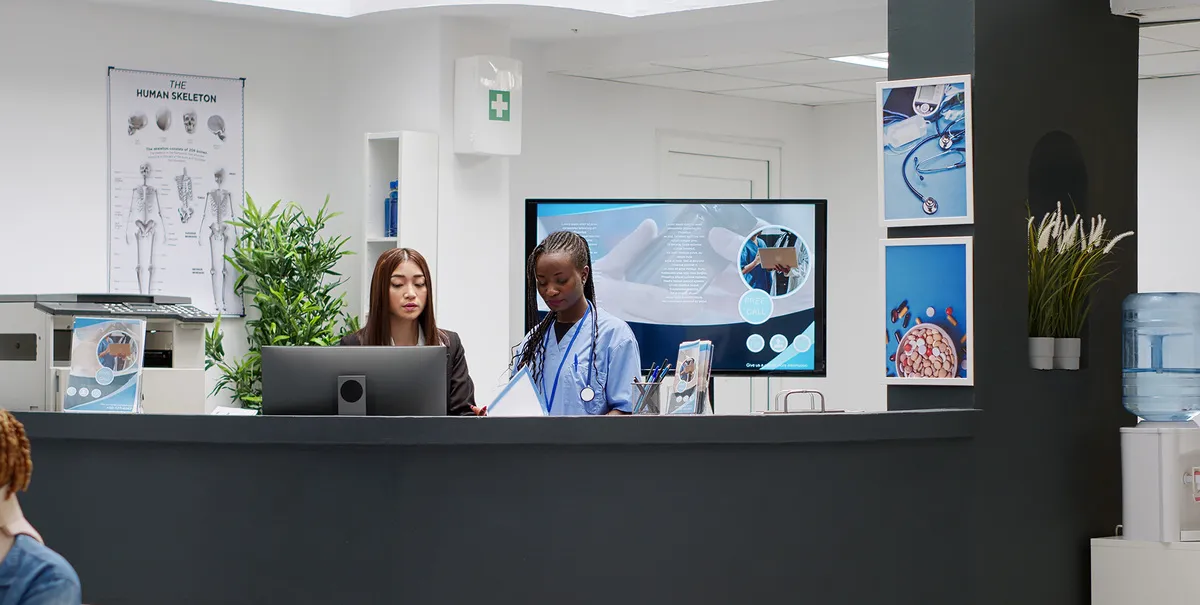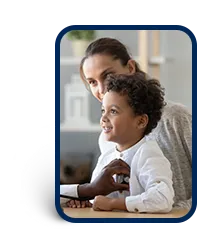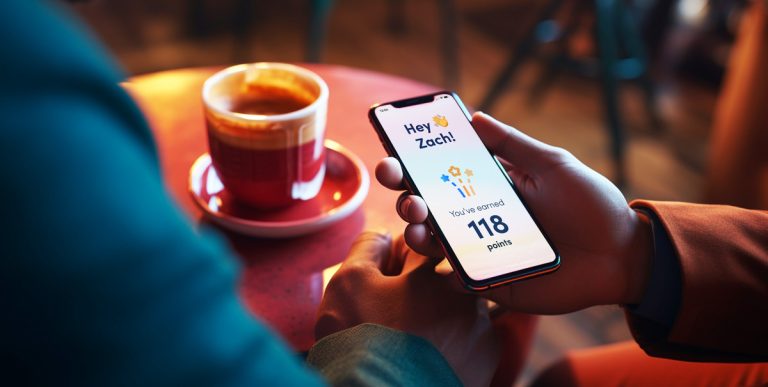When a patient is going through the healthcare process, the last thing they want to feel like is a number. Unfortunately, that’s often what ends up happening, but it doesn’t have to be that way. Healthcare stakeholders across the spectrum — providers, payors, and medical device, wellness and pharmaceutical organizations — can reach their patients and customers in a way that feels more personal than seeing your post on their social media feed.
Hyper-personalization in the healthcare industry has a lot of benefits, both for the patients and the businesses that serve them. But what does it even mean?
Understand hyper-personalization in healthcare, including why it’s crucial in the modern era, how you can fuel a hyper-personalized communications strategy and examples of health businesses doing it (and doing it well).
What Is Hyper-Personalization in Healthcare?
In the healthcare industry, hyper-personalization refers to the deep 1:1 personalization across various touchpoints of the healthcare system, from dealing with health insurance to interacting with providers and everywhere in between.
Personalization in health and wellness always optimizes the experience, but hyper-personalization goes a step further by requiring each interaction to be unique to the individual.
Hyper-personalization comes in a range of media. Email, video, account home pages, even direct mail can all be personalized to the nth degree. The limits of hyper-personalization depend on both your team’s creativity and the technology you have supporting you. For example, you may not be able to provide hyper-personalized communication without real-time data analytics and interpretation that can put key customer data to use.
Why Hyper-Personalization in Healthcare Is a Must
About half of patients say interpersonal engagement is what they like most about their primary care provider, according to the 2024 National Consumer Healthcare Survey from consulting firm Jarrard.
While some interpersonal engagement can be done in person, doctors and nurses are busy. Healthcare professionals are particularly susceptible to burnout. That’s why employing hyper-personalization practices in healthcare requires two things.
- First, digital health communications can foster hyper-personalized experiences without putting more on providers’ plates.
- Second, cutting-edge, in-office technology must be in use to enable providers to be more present with — and knowledgeable about — individuals that come into their office.
Hyper-personalization in healthcare goes beyond the primary care physician, benefiting all corners of the healthcare ecosystem. Hospitals, urgent care centers, health institutes and insurance companies are a few examples of other organizations involved in the healthcare space who benefit from deep, intentional personalization in the communications process.
Post on
And one more reason why hyper-personalization in healthcare is a must: trust.
With hyper-personalization linked to trust, it’s important to talk about something called the “trust gap.” According to a survey from global pharmaceutical healthcare company Sanofi, 19% of people from marginalized groups (women, ethnic minorities, LGBTQ+ and disabled people) said their physical health worsened after losing trust in their healthcare provider. Meanwhile, they were 2x as likely to experience worsening mental health as a result.
Losing trust is not just bad for business. In the healthcare sector, the consequences are tangible, with patient outcomes at risk. If that doesn’t convince you hyper-personalization is crucial, see how leading brands leverage it to improve the customer experience.
Where To Personalize the Patient Experience (With Examples)
Hyper-personalization exists across the health and wellness space. Here are some use cases for inspiration on where to personalize the patient experience, including examples of how top brands have already made it happen.
Onboarding Patients
One place hyper-personalization works well is onboarding new patients. Just because a new patient made an appointment does not mean they’re going to stick around for the long haul. By improving the customer experience through individualized communications from the jump, you’re increasing chances of loyalty for the long haul.
Take not-for-profit medical and dental insurance company Select Health, for example. SelectHealth personalizes the onboarding process by sending customers their own video that speaks to specific information they need to know about their new plan.
For example, when a customer is transitioning from the workforce to Medicare coverage, Select Health clearly outlines information like how many months until they’re eligible for Medicare, when the enrollment period is in relation to their birthday and the plan names available for their zip code.
Lifestyle Management
Healthcare networks are interested in helping their patients and employees improve their overall wellness. With a stake in lifestyle management, it makes sense that hyper-personalized content helps organizations achieve their goals
One example of hyper-personalization for lifestyle management comes from WW (formerly known as Weight Watchers), a wellness company helping customers build healthy habits with a nutritionist-designed food plan. Using a hyper-personalized video recap, they were able to show each person how their positive steps have made a difference over the course of the year. Showing a patient’s positive steps can be a great motivator, and a year in review is an effective way to do it.
The National Health Service (NHS) of England also used hyper-personalization to help people living with Type 2 Diabetes in South London understand complex health information like test results and become aware of relevant health and lifestyle services in their area. They sent texts and instant messages with information specific to the individual’s goals at that moment in their journey.
In-App Personalization
Healthcare has gone through a major digital transformation in recent years, a movement fast-tracked by the pandemic. In order to retain (or regain) patient engagement, providers have had to figure out ways to optimize the digital appointment scheduling and follow-up process. By using an app that prioritizes personalization at the patient level, health systems are able to balance the need for tech with patient satisfaction.
Take MyChart, for example. MyChart is a digital platform powered by electronic health records software Epic that lets patients see their medications, test results, upcoming appointments, medical bills, price estimates and more. All of the information is deeply personalized to individual patients, opening up a clearer path to better health outcomes.
Financial Explainer
Around 15% of households owe medical debt, according to the latest U.S. Census data. Expand the definition of medical debt further to include medical debt on credit cards or owed to family members and the rate increases to 41% of adults, KFF reports.
All of that is to say it’s extremely important for healthcare organizations to be transparent with patients when it comes to bills and financial requirements, both to protect patient trust and their financial wellbeing. Hyper-personalization is a valuable way to improve financial transparency.
Health and life insurance company Vitality used hyper-personalization to break down customer quotes on the individual level, including what that quote covers. Plus, Vitality incorporated Interactive Video to make the experience feel even more intimate and allow customers to better navigate their plan.
Video is just one avenue where you can embrace hyper-personalized marketing throughout the patient journey. As you can see from the examples above, many providers choose to use video as it’s one of the best (and more human) ways to communicate with patients.
Personalized Videos can connect patients to providers more meaningfully and authentically than most other modes of communication — that is, except for face-to-face or picking up the phone and having a chat with every patient.
But data-driven video has the benefit of being scalable and accessible, with viewers able to watch their Personalized Video on demand, as often as needed. You can add visuals on screen, stress important details in written text on screen and spoken in the voiceover, and break down complicated information in bite-size chunks. That’s just part of the reason people are 3.5x more likely to prefer video over text when a brand needs to communicate something complex — which, as we all know, most healthcare info is.
Remote Patient Monitoring
Virtual healthcare appointments are a huge advancement, but they’ve historically had the drawback of relying on self-reported vitals. However, that’s changing. MDLIVE recently announced a solution that relies on digital device integration and automatic data uploading to the patient portal. With partnerships with Cigna Healthcare and more, this makes virtual diagnosing more accurate and remote care more personalized.
Cigna writes about the program, “Expanding access to primary care services virtually is especially critical given the increasing number of people who do not have an existing primary care provider. MDLIVE providers refer our customers to in-person providers as needed.”
Ultimately, advancements like this can make remote medical appointments feel as intimate as if you were in the room together — even when that’s not possible.
AI Advancements in the Healthcare Sector
Artificial intelligence is changing the way every industry operates, healthcare included. But with the sensitive impact of healthcare, it makes sense that AI is slow and steady. “You’re dealing with human beings and you have to be incredibly careful with issues of privacy, security, transparency,” Dr. Josh Fessel at the National Institutes of Health said in an interview.
Just like with human communication, it’s critical to get the message right when using AI. This is because of risks like hallucinations (when an AI model generates incorrect or misleading information) or simply an inability to understand sensitive tones and information needed to communicate with people about their health concerns.
One way healthcare businesses can manage this is by using a type of AI called retrieval augmented generation, or RAG. Whereas publicly accessible large language models (LLMs) get their information from the internet at large, RAG models enable companies to use generative AI on a closed system, with access only to brand-approved, specialized data.
AI can also be a tool in a broader hyper-personalization toolbox, but it’s important to remember it’s just an ingredient — and an optional one at that. For example, Idomoo’s Enterprise AI Video creator uses RAG to generate hyper-personalized video for internal and external communications. It dramatically speeds up the video creation process, making hyper-personalization through video a much more attainable feat for smaller marketing and comms teams.
Don’t Forget About Patient Data Security
Generally speaking, hyper-personalization is a data-driven pursuit. In the case of healthcare, patient data is sensitive on multiple levels. This makes data security a critical focus area for any hyper-personalized endeavor. Whether you’re using machine learning technology, automation, segmentation or some other mechanism for personalization, take the necessary steps to safeguard patient data.
Make sure any third-party digital technology you work with is HIPAA compliant and ISO 27799 health informatics certified, like Idomoo. ISO 27799, in particular, is key for data security in the healthcare space since it offers essential guidelines for organizations to navigate information security standards and practices with a particular emphasis on health informatics.
The Patient Experience Awaits Its Transformation
Developing a hyper-personalized patient experience doesn’t have to be all-consuming. And the outcomes are so worthwhile.
Our Next Generation Personalized Video platform helps providers and other health businesses cater to individuals’ unique needs and show their community that they care, even if it’s on the digital front, ultimately helping fill that trust gap.
To make things even easier, Idomoo integrates with Epic, a prominent electronic health record (EHR) system used in 89% of American acute care hospitals. With genuine, strategic and hyper-personalized care on the line, what are you waiting for?






